The cleaning, repair, remounting and installation of a large Giant Deer skeleton for Edinburgh Museum (National Museums Scotland)
This skeleton is a particularly well preserved giant deer, and also very large – it stands about 2.7 metres tall and the spread of the antlers is approximately 2.4 metres. It required re-mounting with the huge skull and antlers supported from below, rather than suspended from above as had been the case when on display previously.The specimen was dusty and dirty, so was initially cleaned gently with a soft brush and the dust caught by a vacuum cleaner nozzle. Then the surface was swabbed gently, one small area at a time, with a lightly damp cloth (water with a small amount of acetone to aid evaporation, to stop water soaking in) and the area was immediately dried with dry tissue before moving on to the next area. Old splashes of paint and glue were removed with a scalpel.
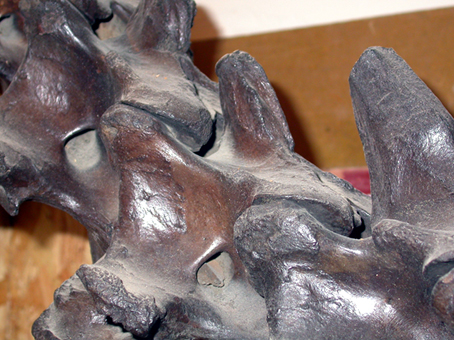

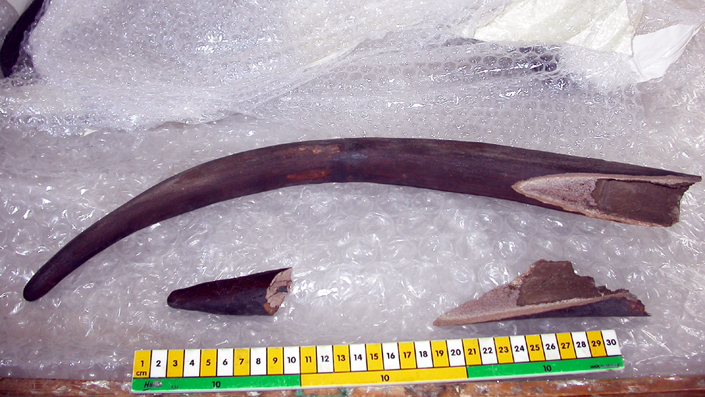
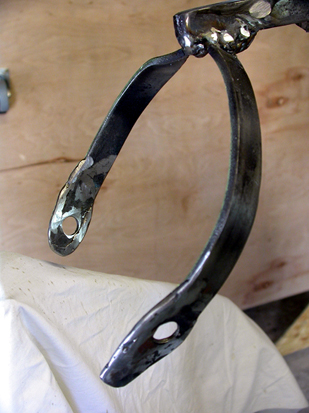
Dusty vertebrae, the mandible (one half has been cleaned), the broken antler tines and the bracket made for the for the pelvis and rear limbs.
The broken ends of two damaged antler tines were consolidated with Paraloid B72 (a reversible methacrylate co-polymer) at 10% in acetone before reattaching and adhering the separated pieces with Paraloid B72 adhesive. The anteriormost portion of the rib cage on the right side where it meets the metalwork taking the front legs was broken and was repaired in the same way, as were the heads of two ribs on the right. A new metal support was fabricated to hold the heavy skull and antlers securely in place. This was shaped on the forge in sections and then welded together. It needed to be secured to the old frame when installed, so adjustments were made to the old frame so that the pieces would interlock. As well as this main vertical support to take the weight of the antler palms, a bracket was made to fit within the pelvis for the poles of the rear legs to bolt to so that the bracket could take the weight of the rear of the vertebral column and ribs, rather than the fragile sub-fossil pelvis itself.
A wooden baseboard was made for the metalwork to bolt to, and the reassembled skeleton was installed successfully on top of a 2.5 metre high plinth in the newly refurbished museum in Edinburgh.

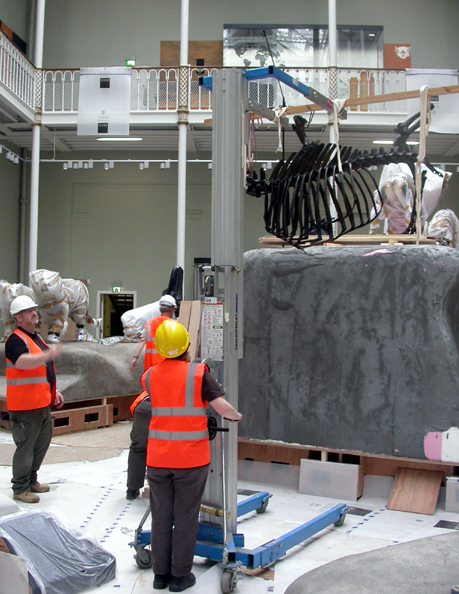
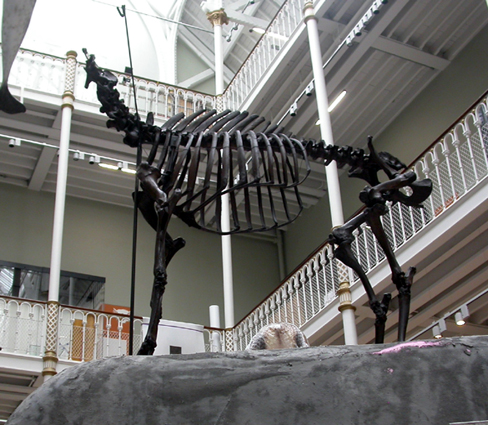
Installing the skeleton on the tall plinth in Edinburgh.

The finished specimen.
For more details about what we can do for you, or for a quote, please contact:
enquiries@natural-history-conservation.com
We are members of the United Kingdom Institute for Conservation of Historic and Artistic Works